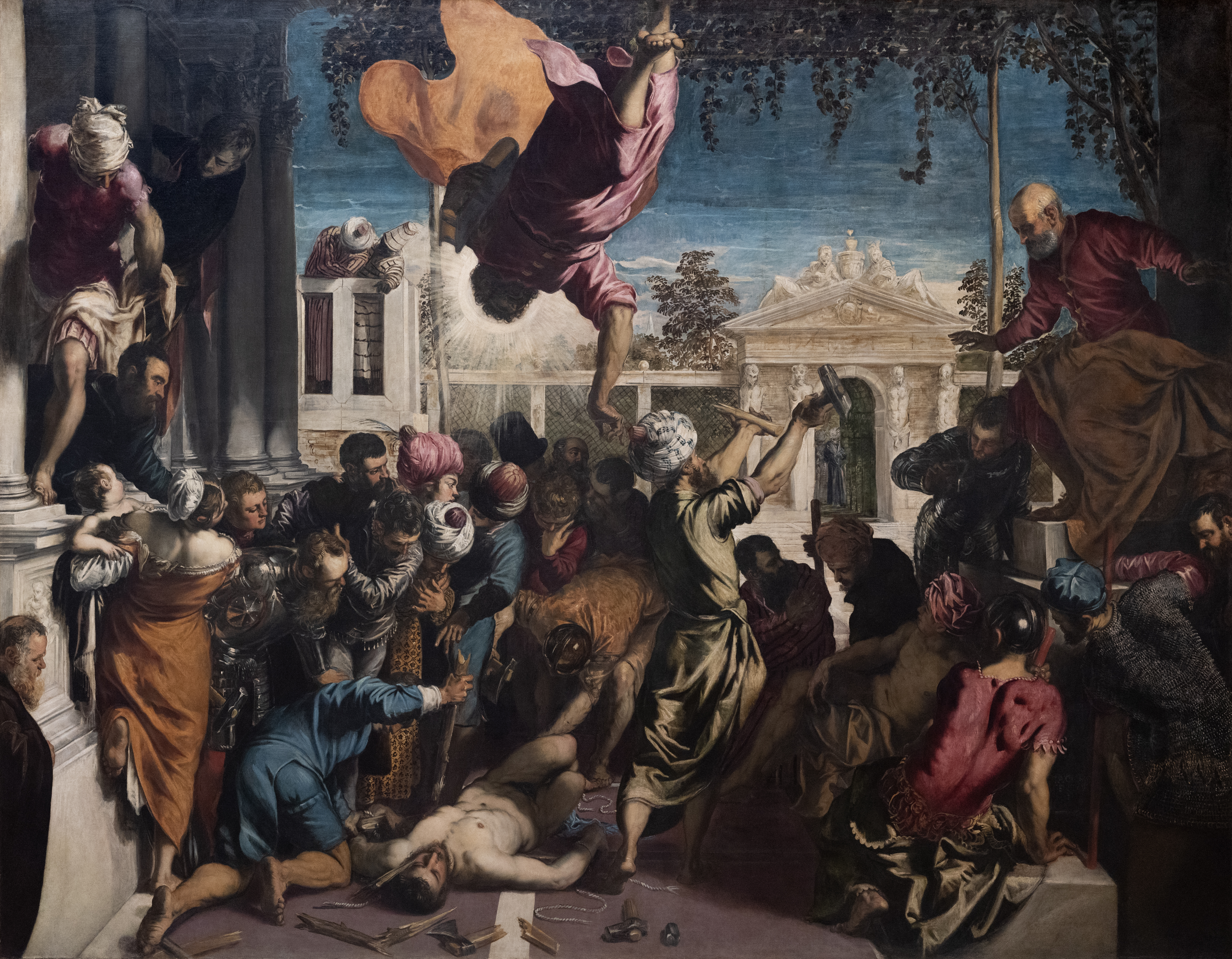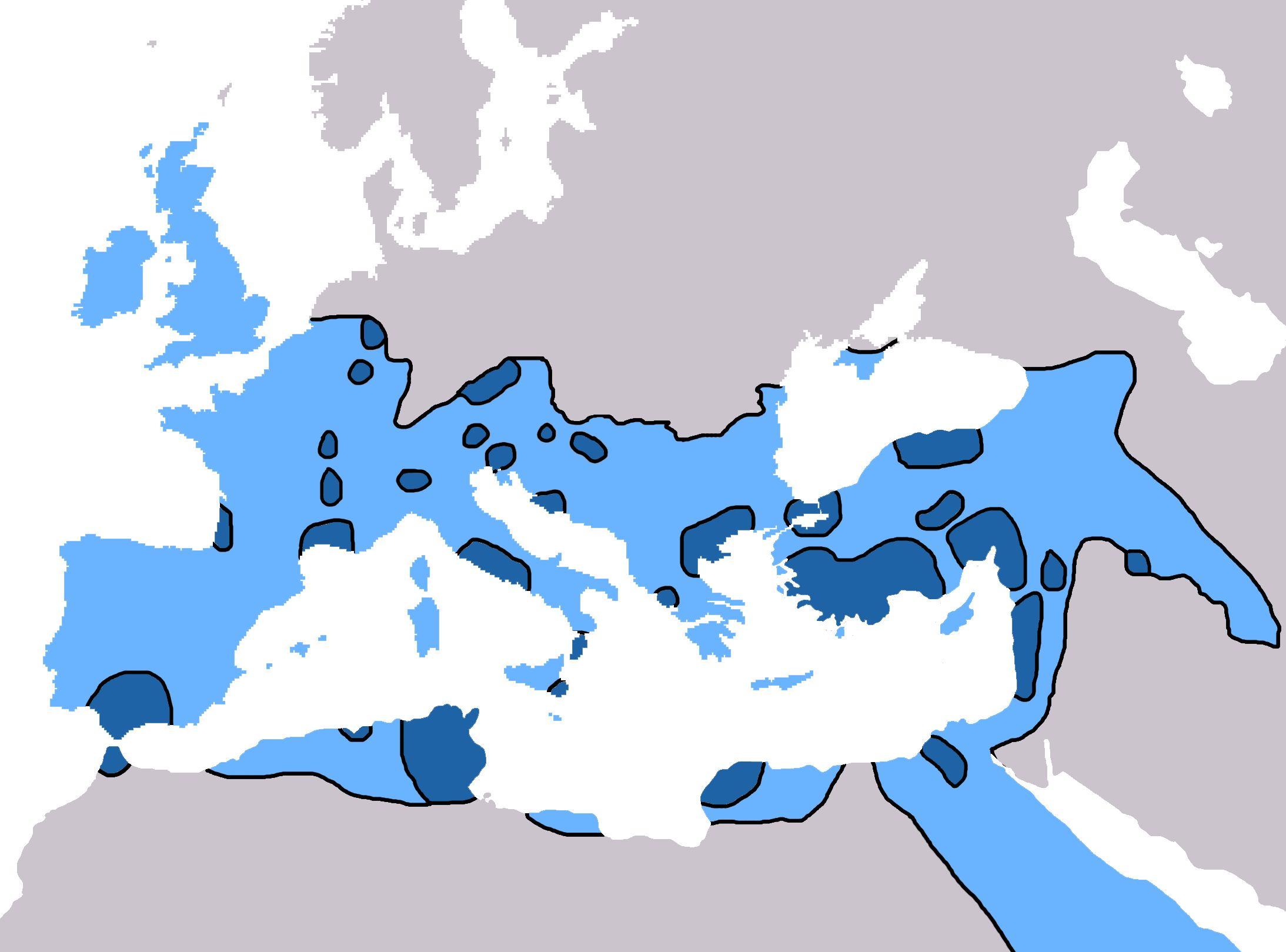|
Act Of Peter
:''This article discusses a text which is quite distinct from the Acts of Peter''. The ''Act of Peter'' is a brief miracle text celebrating virginity that is found in the 5th-century papyrus Berlin Codex (Berolinensis Gnosticus 8502). It treats of the crippled virgin daughter of Peter, who was accused by the crowd that gathered before his door, among whom he had caused many blind to see, the deaf to hear, and the lame to walk: "But your virgin daughter, who has grown up to be beautiful and who has believed in the name of God, why have you not helped her? For behold, one side of her is completely paralyzed and she lies crippled there in the corner." Peter bids the girl rise and walk, and she does, and the crowd rejoices. "Then Peter said to his daughter, 'Go to your place, sit down, and become an invalid again.'" The crowd weeps. Peter then relates the vision he received when the girl was born, that she would wound many with her beauty. "When the girl became ten years old, many ... [...More Info...] [...Related Items...] OR: [Wikipedia] [Google] [Baidu] |
Acts Of Peter
The Acts of Peter is one of the earliest of the apocryphal Acts of the Apostles (genre), Acts of the Apostles in Christianity, dating to the late 2nd century AD. The majority of the text has survived only in the Vetus Latina, Latin translation of the Codex Vercellensis, under the title ("Act of Peter with Simon"). It is notable for a description of a miracle contest between Saint Peter and Simon Magus, the first record of the tradition that Saint Peter was Cross of Saint Peter, crucified head-down, and as the origin of the saying ''Quo vadis?'' Dating and history The Acts of Peter were originally composed in Koine Greek during the second half of the 2nd century, probably in Asia Minor. The style of the Acts' writing is quite similar to that of four other apocryphal Acts – Acts of Andrew, Acts of John, Acts of Paul, and Acts of Thomas. For this reason, all five of these works were traditionally attributed to a single author; Photios I of Constantinople, Photios I () identified t ... [...More Info...] [...Related Items...] OR: [Wikipedia] [Google] [Baidu] |
Virginity
Virginity is a social construct that denotes the state of a person who has never engaged in sexual intercourse. As it is not an objective term with an operational definition, social definitions of what constitutes virginity, or the lack thereof, vary. Heterosexuals may or may not consider loss of virginity to occur only through penile–vaginal penetration, while people of other sexual orientations often include oral sex, anal sex, or manual sex in their definitions of virginity loss. The term "virgin" encompasses a range of definitions, as found in traditional, modern, and ethical concepts. Religious rituals for regaining virginity exist in many cultures. Some men and women who practice celibacy after losing their virginity consider themselves born-again virgins. There are cultural and religious traditions that place special value and significance on this state, predominantly towards unmarried females, associated with notions of personal purity, honour, and worth. Like c ... [...More Info...] [...Related Items...] OR: [Wikipedia] [Google] [Baidu] |
Berlin Codex
The Berlin Codex (also known as the Akhmim Codex and the Berlin Gnostic Codex, BG), given the accession number ''Papyrus Berolinensis'' 8502, is a Coptic manuscript from the 5th century CE, unearthed in Akhmim, Egypt. In Cairo, in January 1896, Carl Reinhardt bought the codex, which had been recently discovered, wrapped in feathers, in a niche in a wall at a Christian burial site. It was a papyrus bound book (a codex), dating to early 5th century (or possibly late 4th century) that was written in Sahidic dialect of Coptic, which was in common use in Egypt during that time. It was taken to Berlin for the Berliner Museen, where it was brought to the notice of the Royal Prussian Academy of Sciences by Carl Schmidt, July 16, 1896. Schmidt edited the Act of Peter in 1903, but the gnostic contents of the Berlin Codex were not finally completely translated until 1955. Few people paid attention to it until the 1970s, when a new generation of scholars of early Christianity took an i ... [...More Info...] [...Related Items...] OR: [Wikipedia] [Google] [Baidu] |
Simon Peter
Saint Peter (born Shimon Bar Yonah; 1 BC – AD 64/68), also known as Peter the Apostle, Simon Peter, Simeon, Simon, or Cephas, was one of the Twelve Apostles of Jesus and one of the first leaders of the early Christian Church. He appears repeatedly and prominently in all four New Testament gospels, as well as the Acts of the Apostles. Catholic and Orthodox tradition treats Peter as the first bishop of Rome – or pope – and also as the first bishop of Antioch. Peter's History of the papacy, leadership of the early believers is estimated to have spanned from AD 30 or 33 to his death; these dates suggest that he could have been the longest-reigning pope, for anywhere from 31 to 38 years; however, this has never been verified. According to Apostolic Age, Christian tradition, Peter was crucified in Rome under Emperor Nero. The ancient Christian churches all venerate Peter as a major saint and the founder of the Church of Antioch and the Diocese of Rome, Church of Rome, but t ... [...More Info...] [...Related Items...] OR: [Wikipedia] [Google] [Baidu] |
Gnosticism
Gnosticism (from Ancient Greek language, Ancient Greek: , Romanization of Ancient Greek, romanized: ''gnōstikós'', Koine Greek: Help:IPA/Greek, [ɣnostiˈkos], 'having knowledge') is a collection of religious ideas and systems that coalesced in the late 1st century AD among Early Christianity, early Christian sects. These diverse groups emphasized personal spiritual knowledge (''gnosis'') above the Proto-orthodox Christianity, proto-orthodox teachings, traditions, and authority of religious institutions. Generally, in Gnosticism, the Monad (Gnosticism), Monad is the supreme God who emanates divine beings; one, Sophia (Gnosticism), Sophia, creates the flawed demiurge who makes the material world, trapping souls until they regain divine knowledge. Consequently, Gnostics considered material existence flawed or evil, and held the principal element of salvation to be direct knowledge of the hidden divinity, attained via mystical or esoteric insight. Many Gnostic texts deal not in co ... [...More Info...] [...Related Items...] OR: [Wikipedia] [Google] [Baidu] |
Miracle
A miracle is an event that is inexplicable by natural or scientific lawsOne dictionary define"Miracle"as: "A surprising and welcome event that is not explicable by natural or scientific laws and is therefore considered to be the work of a divine agency." and accordingly gets attributed to some supernatural or praeternatural cause. Various religions often attribute a phenomenon characterized as miraculous to the actions of a supernatural being, (especially) a deity, a miracle worker, a saint, or a religious leader. Informally, English-speakers often use the word ''miracle'' to characterise any beneficial event that is statistically unlikely but not contrary to the laws of nature, such as surviving a natural disaster, or simply a "wonderful" occurrence, regardless of likelihood (e.g. "the miracle of childbirth"). Some coincidences may be seen as miracles. A true miracle would, by definition, be a non-natural phenomenon, leading many writers to dismiss miracles as physically i ... [...More Info...] [...Related Items...] OR: [Wikipedia] [Google] [Baidu] |
New Testament
The New Testament (NT) is the second division of the Christian biblical canon. It discusses the teachings and person of Jesus in Christianity, Jesus, as well as events relating to Christianity in the 1st century, first-century Christianity. The New Testament's background, the first division of the Christian Bible, is called the Old Testament, which is based primarily upon the Hebrew Bible; together they are regarded as Sacred Scripture by Christians. The New Testament is a collection of 27 Christianity, Christian texts written in Koine Greek by various authors, forming the second major division of the Christian Bible. It includes four Gospel, gospels, the Acts of the Apostles, epistles attributed to Paul the Apostle, Paul and other authors, and the Book of Revelation. The Development of the New Testament canon, New Testament canon developed gradually over the first few centuries of Christianity through a complex process of debate, rejection of Heresy, heretical texts, and ... [...More Info...] [...Related Items...] OR: [Wikipedia] [Google] [Baidu] |
Christian Church
In ecclesiology, the Christian Church is what different Christian denominations conceive of as being the true body of Christians or the original institution established by Jesus Christ. "Christian Church" has also been used in academia as a synonym for Christianity, despite the fact that it is composed of multiple churches or denominations, many of which hold a doctrinal claim of being the one true church to the exclusion of the others. For many Protestantism, Protestant Christians, the Christian Church has two components: the church visible, institutions in which "the Bible, Word of God purely preached and listened to, and the sacraments administered according to Christ's institution", as well as the church invisible—all "who are truly Salvation in Christianity, saved" (with these beings members of the visible church). In this understanding of the invisible church, "Christian Church" (or Catholic (term), catholic Church) does not refer to a particular Christian denomination, ... [...More Info...] [...Related Items...] OR: [Wikipedia] [Google] [Baidu] |
Gnostic Texts
Gnosticism used a number of religious texts that are preserved, in part or whole, in ancient manuscripts, or lost but mentioned critically in Patristic writings. There is significant scholarly debate around what Gnosticism is, and therefore what qualifies as a "Gnostic text." Gnostic texts Gnostic texts preserved before 1945 Prior to the discovery at Nag Hammadi, only the following texts were available to students of Gnosticism. Reconstructions were attempted from the records of the heresiologists, but these were necessarily coloured by the motivation behind the source accounts. * Works preserved by the Church: ** '' Acts of Thomas'' (Especially '' Hymn of the Pearl'' or ''The Hymn of the Robe of Glory'') ** ''The Acts of John'' (Especially '' The Hymn of Jesus'') * The Bruce Codex (purchased in 1769 by James Bruce): ** '' Books of Jeu'', also known as ''The Gnosis of the Invisible God'' ** The '' Untitled Text'' * The Askew Codex (British Museum, bought in 1784): ** '' Pis ... [...More Info...] [...Related Items...] OR: [Wikipedia] [Google] [Baidu] |






